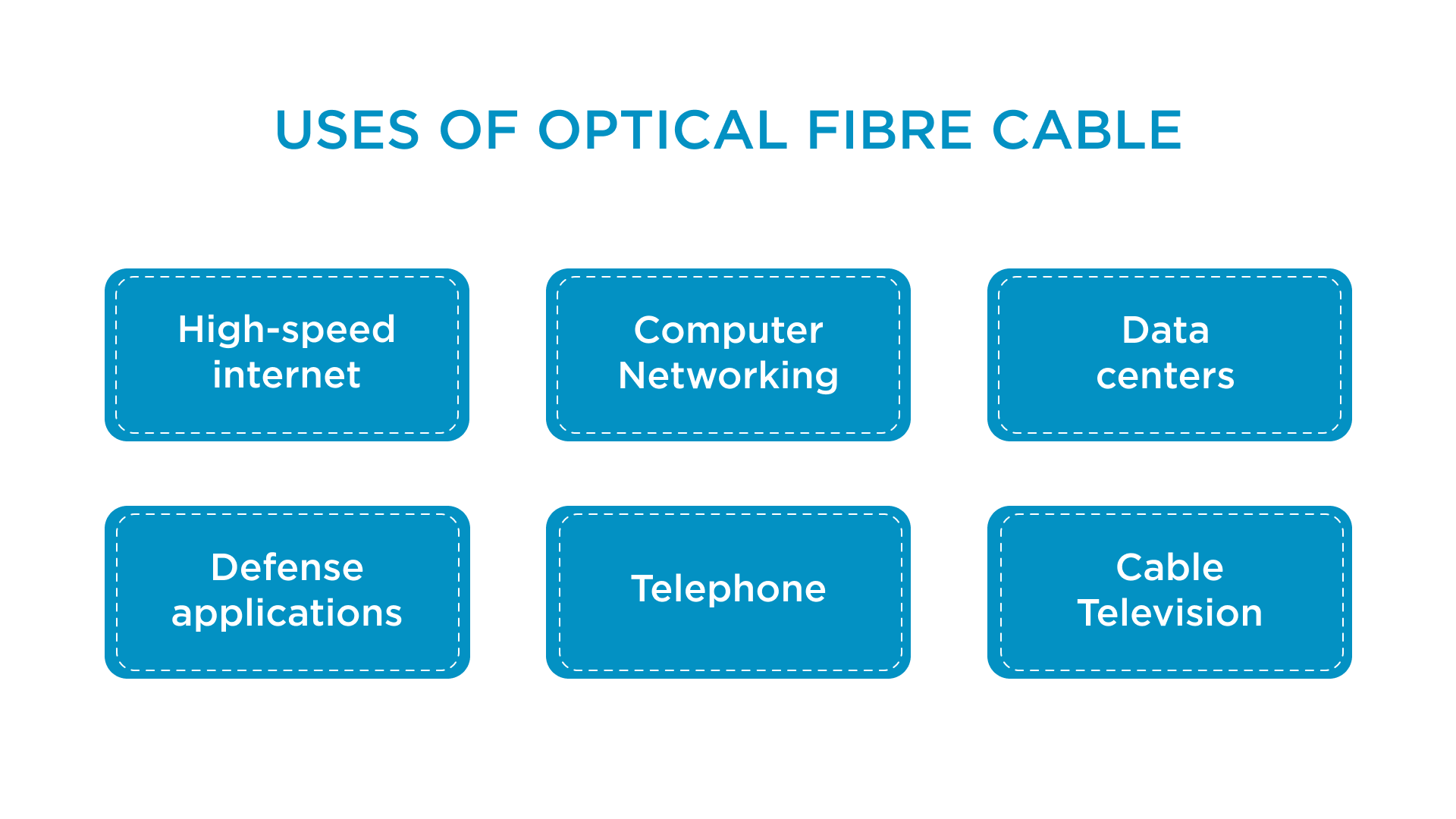Optical Fibre Cables
Many of us have heard the word Fibre optics or optical fiber technology but only a few of us really understand it and know its uses and applications. The modern generation has increased the need to stay connected always. This has increased the demand for high-quality internet with high quality. Also, innovations in the telecom sector have increased the deployment of broadband-based network architectures. This all has given a huge growth opportunity for the fiber optic cable industry.
Do you want to know the science behind Optical fiber cable? Its uses? Different types of fiber cables? Advantages and disadvantages? If yes, read along with us and find the answers to all your questions.
Let’s proceed!
Shortcuts
What is Optical Fibre Cable?
Optical Fibre Cable is a cable that is used to transmit the data fibers. It contains strands of thread or glass inside an insulated casing. These cables are used for high-performance data transmission, long-distance, and telecommunications. As compared to wired cables, fiber optic cables provide bandwidth and transmit data over long distances. It supports cable television and telephone systems also.
These cables are thin and lighter than the other cables. Data can be transmitted in digital or light form through the optical fiber cable. Therefore, optical fiber cable is actually a transmission medium, a pipe to carry signals over a long distance at a high speed. One cable can have as few as two strands or as many as hundreds of strands.
Science Behind Optical Fibre Cable
Fiber is as thin as human hair. It is a material made up of glass. Usually, an optical fiber’s diameter is 125 micrometers (μm), which is actually the diameter of the cladding, or outer reflecting layer. The inner transmitting cylinder’s diameter is comparatively smaller which is 10 μm.
Light rays beam into the fiber within the inner transmitting cylinder through the process of total internal reflection. This can happen for great distances with little reduction in density. The degree of density reduction varies according to the wavelength with little reduction in intensity.
Types of Fiber Optics Connections
There are about 3 types of fiber optics connections provided by the internet service providers, each denoted as ‘Fiber to the X’, where X denotes the destination of fiber connection.
FTTH/FTTP/FTTD: Fiber to the home, premises, business or desktop consists of fiber cables straight to the destination. The connectivity line consists of a grail of fiber connections and is the most expensive among its peers.
FTTC/FTTN: Fiber to the curb, cabinet or neighbourhood is the most commonly used fiber optics connection. The fiber connection is limited to a street curb or a cabinet from where internet connection or signals are dispersed to destination (home or offices) through copper cables or DSL. It is the most affordable type of connection due to the least amount of money involved in infrastructure.
FTTB: Fiber to the building connection is limited to a building, from where the connection is distributed throughout the building using copper cables. The building can be a residential building, hotel, school or a hospital.
Uses of Optical Fibre Cable

Some of the most popular uses of fiber optic cables are listed below:
High-speed internet
The optical fiber cables transmit large amounts of data at very high speeds. This technology is therefore widely used in internet cables. As compared to traditional copper wires, fiber optic cables are less bulky, lighter, more flexible, and carry more data.
Computer Networking
It is always better to use optical fiber cables for faster networking between computers in a single building or across the building.
Data Centers
For connecting edge data centers as well as for structured cabling within the data centers optical fiber cables are used.
Defense applications
For data transmission, for a high level of data security in the defense sector, optical fiber cables are the ideal choice.
Telephone
You can have clear communication and connect faster without any lag with the help of optical fiber cables.
Cable Television
Optical fiber cables are the ideal solutions for transmitting signals for high definition televisions because they have greater bandwidth and speed. The use of fiber optic cables in the transmission of cable signals has grown explosively over the years.
Advantages of Optical Fiber Cable
- Bandwidth propagation is higher than copper wires
- Less power loss
- Allows transmission of data over long distances
- Supports higher capacity of traffic
- Capacity of fiber cable is 4.5 times better than copper cable
- Very secure for transmission of data
- Very flexible, light-weighted as thin as human hair, and can bend easily
Disadvantages of Optical Fiber Cable
- The installation of these cables is costly
- These cables are more delicate than copper wires
- Special devices are needed to check the transmission of fiber cable
Follow us on Facebook, LinkedIn, YouTube, and Twitter to get updates on the latest technological advancements in the telecom sector.
Contact h8ssrms@height8tech.com or +91-79 40089216.
Visit our website for more information.

